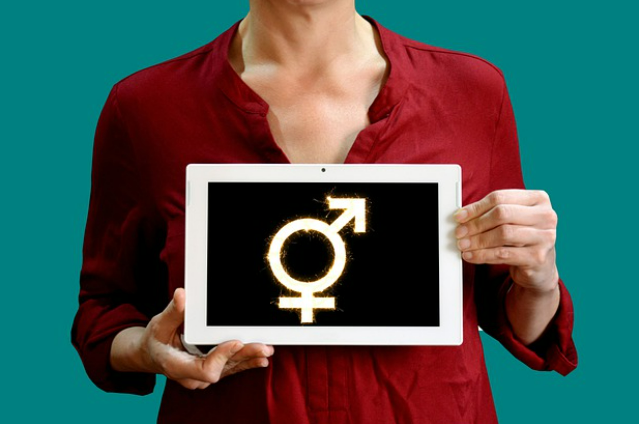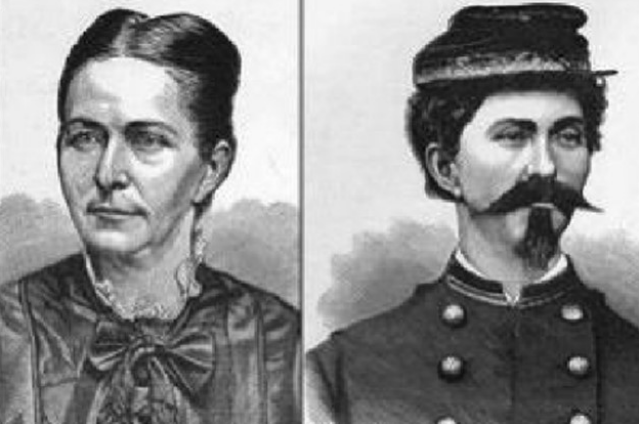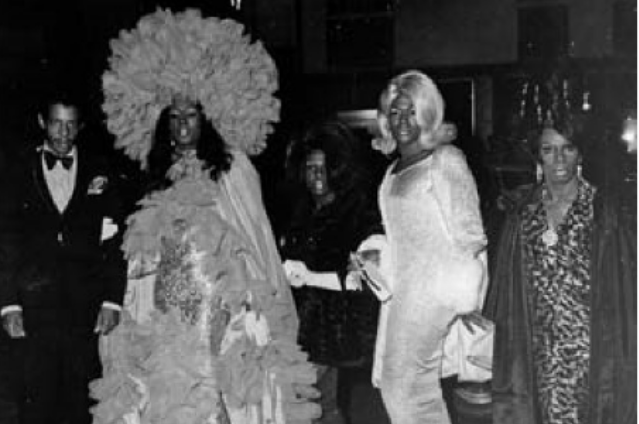
Are Gender and sex the same?
Although many people use the terms interchangeably in daily conversation, sex and gender are not synonymous. Gender is generally considered cultural, while sex is generally considered biological (although that understanding is changing too). Sex is denoted by the terms "male" and "female." Sex refers to a person's reproductive capacity or potential—whether or not they produce one of the two specialized cells (egg or sperm) required for our species to reproduce physically. The male sex is thought to produce sperm, while the female sex is thought to produce eggs. This does not imply that there are only two types of bodies (male and female) or that all bodies are one of these two types.
Intersex bodies are defined as those that combine male and female physical characteristics in a variety of ways (defined below). The sex status of any given body is determined genetically, primarily by the chromosomes, which are parts of the genes (which have been given the identifying labels X and Y). The body's genetic or chromosomal sex cannot be changed (at least not yet). In the modern United States, it is still widely believed that physical sex determines gender (defined below)—that is, that a person with a male body is automatically considered a man and a person with a female body is automatically considered a woman—hence the common tendency to use the terms "sex" and "gender" interchangeably.
Some transgender people believe that their desire to cross gender lines stems from a physical, sex-related reason. Other transgender people believe that their sense of being transgendered has nothing to do with biological sex differences and is instead influenced by psychological and cultural factors. As previously stated, there are a variety of theories about why transgender people exist.
Intersex:
Being an egg-producing or sperm-producing body usually comes with a set of physical characteristics. Egg-producing bodies usually have a uterus, which is where the fused egg/sperm cells develop into new individuals, as well as milk-producing glands that provide nourishment for the young. A penis is common in sperm-producing bodies, which is useful for delivering sperm to the uterus. Natural selection has organised the reproductive anatomy of human bodies in a variety of ways, but these are just the most common. When an egg and sperm cell combine, their chromosomes can combine in patterns other than the two that result in typical male (XY) or female (XX) body types (called "karyotypes").
A body that is genetically XY (male) can appear female at birth due to genetic irregularities. Some people are born with genitals that are a mix of male and female shapes. Vaginas, wombs, and ovaries are absent in some genetically female bodies (XX). All of these, and many more, variations on the most common organisation of human reproductive anatomy are referred to as "intersex" conditions (and used to be called hermaphroditism). Some intersex people prefer the medical term "DSD" (Disorders of Sexual Development) to describe their sex status, while others dismiss it as overly pathologizing. Most people are unaware that intersex conditions are far more common than they think; reliable estimates put the number at around one in every two thousand births.
History begins…
Imagine being a young woman in the 1850s who can't face a life of marriage and childrearing, who has no practical work skills outside the home, and who fantasises about adventure in the military, at sea, or in the mountainous and desert West's mining towns. You sneak away in the middle of the night, dressed in your brother's clothes, and head out to meet your fate. It's possible that your life depends on being taken for exactly who you appear to be. Imagine being a young male who enjoys the social company of women but has no romantic interest in them, and who finds his greatest joy in caring for children. The prospect of being related to as a woman excites you. You disappear into the streets of a large city in search of a way of life that feels right to you, only to be subjected to all of the indignities that society can heap on a woman who is unattached, unemployed, and unlikely to be offered a job or a home.
Gender and Sexuality Regulation:
The transgender social change movement that arose in the United States after WWII has its roots in conditions that began to emerge over a century ago. Beginning in the 1850s, a number of American cities passed ordinances making it illegal for a man or woman to appear in public "in a dress that does not belong to his or her sex." Ordinances prohibiting people from disguising themselves in public or wearing clothes associated with a particular social rank or profession date back to the colonial period, and some also prohibit white people from impersonating Indians or black people from impersonating whites—but the wave of local legislation in the 1850s represented a new development specific to gender presentation. This can be interpreted as a reaction to the changing ways in which some people lived in cities.
There isn't much historical evidence to explain why cross-dressing became a social issue that needed to be addressed in the 1850s, but an old debate about capitalism and gay identity offers some intriguing parallels.
Modern gay and lesbian communities were not possible until the middle of the nineteenth century, according to historian John D'Emilio, with the rise of modern industrial cities and their large working-class populations. Men didn't have the opportunity to form different kinds of emotional and erotic bonds with other men until they could leave tight-knit rural communities characterised by intimate and interlocking forms of familial and religious surveillance. Cities provided the crucial social circumstances for gay communities to form, as the industrial economy created many wage-paying jobs that allowed single men to be independent from their families of origin and live in relative anonymity among masses of other people.
There was no similar urban lesbian subculture until the twentieth century, when more women were able to support themselves as independent wage earners, because women were less able than men to free themselves from the constraints of marriage, childcare, and the care of ageing parents. The 1920s were a watershed moment in this evolution. For the first time in American history, the urban population surpassed the rural population; women wielded historically unprecedented political power as a result of their newly acquired right to vote; and Jazz Age sensibilities embraced more expansive ideas of socially acceptable female sexuality. The increased scope of possibility for independent womanhood became regarded as an important aspect of a new "modern era," which emerged following the upheavals of World War I and was marked by new entertainment technologies (such as motion pictures and sound recordings), modernist art and literature, and electrically illuminated homes and streets (which created more opportunities for night time socializing).

The conditions that aided the development of homosexual social worlds also applied to people who wanted to express their gender in different ways. Female-bodied people who were able to pass for men had more opportunities to travel and work. Male bodied people who identified as women had more opportunities to live as women in cities far away from where they had grown up.
In practise, the distinctions between what we now refer to as "transgender" and "gay" or "lesbian" were not always as clear as they are now. Throughout the second half of the nineteenth century and the first half of the twentieth century, homosexual desire and gender variation were frequently linked; one popular way of thinking about homosexuality at the time was as gender "inversion," in which a man who desired men was thought to be acting like a woman, and a woman who desired women was thought to be acting like a man.
Beginning in the 1850s, new efforts to regulate public gender variance were likely sparked by first wave feminism and an increasingly ethnically diverse population. Beginning with late-eighteenth-century calls for female emancipation, such as Mary Wollstonecraft's Vindication of the Rights of Woman, and culminating in the suffrage campaigns that won women the right to vote in the United States in 1919, first-wave feminism is usually defined as the wave of reform that spanned the entire nineteenth century.
Christine Jorgensen:
When Christine Jorgensen arrived on the scene on December 1, 1952, Prince and her fledgling heterosexual transvestite rights movement had a new identity category to distinguish themselves from. Jorgensen, who was born in the Bronx in 1926 to Danish American parents, made international headlines when she underwent successful genital transformation surgery in Copenhagen. Jorgensen, a shy and effeminate adolescent, had been drafted into the army for a year after graduating from high school and was working as a photographer and film editor with little success when she learned in 1949 that hormonal and surgical "sex change" was possible—in Europe. Transgender issues have been a touchstone for these debates since fate thrust Christine Jorgensen into the spotlight in the 1960s.

Jorgensen, who went on to have a successful career in show business, never saw herself as a political activist, but she was well aware of the historic role she played as a public advocate for issues that were important to her. Thousands of people wrote to her, many of them echoing the sentiments expressed by a French transgender woman who said her story "touched me deeply and gave me a new hope for the future," or a person in upstate New York who said, "May God bless you for your courage so that other people may more clearly understand our problem." "You are a champion of the downtrodden minorities who strive to live within their God-given rights," one correspondent wrote to Jorgensen's parents; another noted that "hundreds of thousands of people look to Chris today as a sort of liberation" in a letter to Jorgensen's parents. One man even proposed that Jorgensen serve as a "central post office," similar to Louise Lawrence's, where transgender people could meet and share their problems, hopes, and fears. Jorgensen told her doctors in Copenhagen that she needed "as much good publicity as possible for the sake of all those to whom I am a representation of themselves" after her return to the United States in 1953 drew an avalanche of paparazzi attention.
Jorgensen's celebrity marked a turning point in transgender history. It raised transgender issues to a new level of public awareness, and it helped define the terms that would shape identity politics in the decades ahead. Christine Jorgensen was first described in the media as a "hermaphrodite," or intersex person, who suffered from a rare physical condition in which her "true" femaleness was hidden behind a mask of maleness. However, she was quickly renamed a "transvestite" in the older sense defined by Hirschfeld, in which the term referred to a broader range of transgender phenomena than it does today. Virginia Prince's efforts in the 1950s and 1960s, partly in response to Jorgensen, to redefine transvestism as a synonym for heterosexual male cross-dressing, are largely responsible for the difference in usage. Simultaneously, Harry Benjamin began promoting the term "transsexual" to distinguish people like Jorgensen who sought surgical transformation from those like Prince who did not.
Government Harassment:
Virginia Prince: In late 1959, in Los Angeles, a small but significant event in transgender political history began to unfold when Virginia Prince followed up on a friend's suggestion that she start a personal correspondence with someone on the East Coast; this third person, who self-identified as a lesbian, had expressed a desire to be put in written contact with Prince through their mutual acquaintance. Prince then received a photograph of two women having sexual relations with one another from her East Coast correspondent (whom neither she nor her friend had ever met in person), with the caption "Me and You." Prince's correspondent was invited to "ask anything," and as their relationship grew closer, Prince wrote a letter describing a lesbian sexual fantasy involving the two of them. Prince's correspondent turned out to be yet another male cross-dresser, one who happened to be under federal postal surveillance for soliciting and receiving obscene materials, and whose personal mail was being examined by the government undercover as part of an ongoing criminal investigation. In 1960, postal inspectors interrogated Prince and decided to charge her with distributing obscenity through the mail as a result of this incident.
Prince wrote the "lesbian letter" that drew the attention of the authorities, and by the time she was charged with a serious crime, she had already begun publishing Transvestia magazine, which was the first long-running transgender-oriented publication in the United States. Transvestia revived the short-lived publication of the same name that Prince and her circle of cross-dressing friends had published in 1952. It was launched in 1960 and continued to be published several times a year into the 1980s. The federal judge declared Prince's probationary sentence to be completed in 1962, with the tacit consent of high-level US Postal Service bureaucrats with whom Prince had been pleading her case; she never had another run-in with the law after that.
The First Modern-Era Transgender Organizations:
Virginia Prince founded the first long-lasting transgender organisations in the United States while her obscenity case was being heard in court. She convened a secret meeting of several local Transvestia subscribers in Los Angeles in 1961, instructing them all to meet at a specific hotel room, each carrying a pair of stockings and high heels concealed in a brown paper bag. Once the men were gathered, Prince told them all to put on the shoes she had requested, thereby implicating them all in the stigmatised activity of cross-dressing and forming a communal (and self-protective) bond. The Hose and Heels Club was formed, and meetings were held on a regular basis. Once her legal troubles were behind her in 1962, Prince's community-organizing efforts went into overdrive. She turned the Hose and Heels Club into the "Alpha Chapter" of the Foundation for Personality Expression (FPE), a new national organisation she modelled after the collegiate sorority system and which quickly grew to several chapters across the country.
FPE, later known as the Society for the Second Self, or Tri-Ess, served as a platform for Prince to promote her gender philosophy, which she outlined in books like How to Be a Woman Though Male and The Transvestite and His Wife. Prince believed that cross-dressing allowed men to express their "full personality" in a world where the masculine and feminine were strictly separated. The conduct of organisational business, a presentation by an invited speaker, and time for socialising were all part of FPE meetings, which were held in private homes or hotel rooms. Prince had complete control over membership in these organisations well into the 1970s, and she only allowed married heterosexual men to join, excluding gays, male-to-female transsexuals, and biologically female people.
FPE's membership restrictions, as well as the format and content of its meetings, reflect a long-standing pattern in minority identity politics in the United States: the most privileged members of a population affected by a particular civil injustice or social oppression are often the first to organise. Their organizations tend to reproduce their privilege by organising around the one thing that interferes with or complicates it. This was especially true of FPE, which was designed to protect the privileges of primarily white, middle-class men who used their money and access to private property to create a space where they could express a stigmatised aspect of themselves without jeopardising their jobs or social standing. Prince played a key role in driving a wedge between the transvestite, transsexual, gay and lesbian, and feminist communities, and she had no vision of a transgender movement that was inclusive, expansive, progressive, and multifaceted. Nonetheless, she undoubtedly played a key role in the establishment of such a movement.
Prince worked tirelessly for many years to promote various transgender causes after beginning to live full-time as a woman in 1968. (Such as the ability to change the gender designation on state-issued identification documents). Her legal troubles in the early 1960s could have been fatal, and she deserves to be remembered in transgender political history for the personal courage she displayed in facing a felony conviction and federal prison sentence for the ostensible crime of "using the mail while transgendered."
